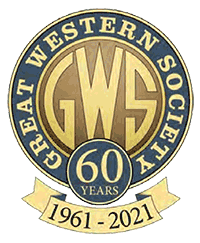The Signalling Centre
For some time the Bristol Group had wanted to display items which could not practically be part of the Branch Line installation, These included:
- Several interesting items associated with Frome and Radstock signalboxes which could not authentically be displayed in or on the existing boxes
- An explanation of the method of working using our Webb-Thompson Electric Train Staffs
- An explanation of the GWR Automatic Train Control ramp which we had installed on the main demonstration line
- The original Diagram from Bristol Temple Meads East Box which had been gifted to the Society many years ago.
In addition we wanted to offer a more interactive experience than a working signalbox could offer, and have something that the public could see on days when the signalboxes were not opened to them.
This offered several challenges, as it would require indoor space which we did not have, and could not easily create as part of the Branch Line signalling display. Like most things railway the potential exhibits were often heavy or large (and sometimes both), the Bristol East Diagram for example was nearly sixteen feet long. The Great Western Trust as custodians of the diagram had suggested at one stage that it would be fun to make a working model railway so that the diagram could be better interpreted. A working model of Bristol Temple Meads in the 1930s - how much space would that require?
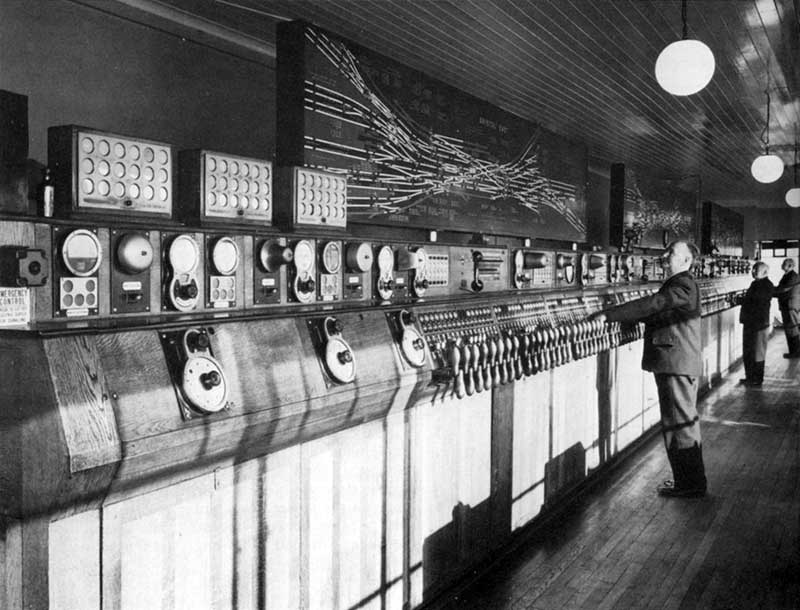
So there things might have rested, but in 2013 the newly-formed Swindon Panel Society (SPS) approached the Great Western Society to ask whether it might be possible for them to bring the BR(WR) 1960s Swindon Panel to Didcot, set it up with a simulator and maybe have it as a part of a clubroom for their members with an occasional opening for the public. As custodians of the existing S&T at Didcot Railway Centre Bristol Group were asked to attend a meeting between GWS and SPS - what an opportunity!
Armed with a few diagrams and lists of potential exhibits we suggested that, whilst we would welcome the preservation of Swindon Panel at Didcot, wouldn't it be a lot better if:
- It was available as a public exhibit whenever the Railway Centre was open
- It was supported by other exhibits to provide historical context giving a publicly accessible outline history of the signal box (mostly as practised by the GWR and its successors), and providing an opportunity to display several items already in the GWS' and Great Western Trust's collection
- All the exhibits within this new centre be designed to allow as much visitor interaction as possible
The GWS Board agreed, the SPS agreed and offered to contribute financially towards the cost of the proposed building and the Civil Engineer agreed that such a building was possible. We were offered a site comprising a major extension to the electrical compound and switch room towards the Museum Archive Building. This had originally been proposed for a building including workshops and a mess room (which facilities will now be provided in the GWR sectional concrete building being re-erected nearby).
Bristol Group for its part agreed to organise all the displays, other than those directly related to Swindon Panel – which would be conducted by the SPS team. In practice several Bristol Group members are also members of SPS and there has been a good deal of exchange of expertise and skills where appropriate. The Group also assisted with the later stages of fitting out the building by, amongst other things, painting the ceiling and helping install the timber floor.
The Signalling Centre depicts five major eras of railway signalling, and encourages visitors to note other areas of signalling interest around the site.

Early Signalling - 1838
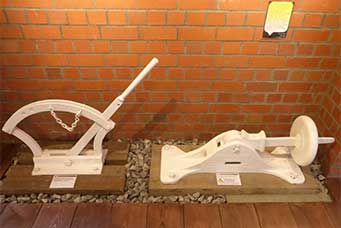
In the early days the Great Western, like other railways, relied on Railway Policemen, hand lamps and the time interval system. Principal exhibits are two hand point levers, and visitors are also directed to the Disc and Crossbar signal and the Policeman's hut near Frome Cabin.
Signalling, such as it was, required a huge staff working outdoors in all weathers, and being expected to deal with many other duties, with consequent communication and co-ordination problems. Luckily the trains were few, and speeds comparatively low.
More about Early Signalling – 1838 exhibit
The Signalbox - 1870
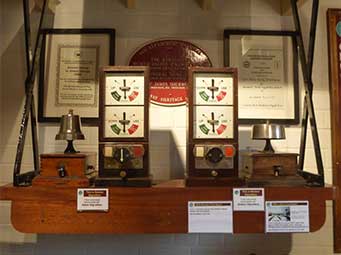
A two lever ground frame allows visitors to operate the rare GWR lattice post signal, ex-Wheatley, which is outside The Signalling Centre and a typical wooden post signal indoors. There are instruments for Double Line Block which allow bell signals and block indications to be exchanged. Also on display are the original brass lever leads recovered from Radstock North Box when we bought it and the original Signalbox nameplate from Frome North Box which we were able to purchase a few years ago with the assistance of the Great Western Trust and the various awards received by the branch line signalling project. Visitors are encouraged to have a closer look at our two signalboxes when they walk past them or travel on the branch line.
Signalboxes, grouping signal levers together allowing for interlocking, and the concept of absolute block are introduced.
More about The Signalbox – 1870 exhibit
The Powerbox - 1935
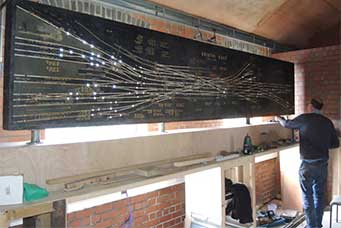
The main exhibit is one of three illuminated diagrams that originally graced Bristol Temple Meads East Box, built for the Great Western Railway in 1935 as part of a major re-signalling scheme. The original indicator lights have been replaced with LEDs and electronics have been assembled which allow an emulation of the 1935 timetable to run on the panel. Visitors can select various routes for themselves using push buttons. Other items of interest from the Bristol resignalling scheme are also on display.
A working searchlight signal and a display about the GWR system of Automatic Train Control also feature.
Powerboxes allowed much larger and more complex areas to be controlled and illuminated diagrams enabled signalmen to monitor trains and equipment out of physical sight of the boxes.
More about The Powerbox – 1935 exhibit
The Panel Box - 1960

This is of course the domain of the Swindon Panel Society and the displays are focussed around the restored Swindon Panel which has been restored to a fully functional system and linked to a custom built simulator so that ‘real trains’ can be run.
Much more information about the panel, its move from Swindon and subsequent restoration can be found on the Swindon Panel Society website.
More about The Panel Box – 1960 exhibit
Signalling Centres - 2000
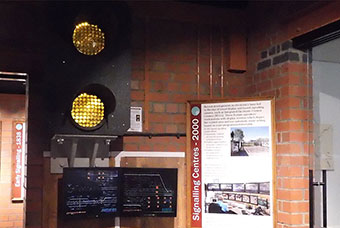
A small display to round-off the story features representative equipment from the Thames Valley Signalling Centre, which coincidentally has a view of Radstock Box from some of its windows. The exhibit includes two VDUs on which the diagram for Didcot Station is displayed.
More about the Signalling Centres – 2000 exhibit
The Signalling Centre was formally opened to the public on 23rd June 2018, but work continues to develop and extend the exhibits.
